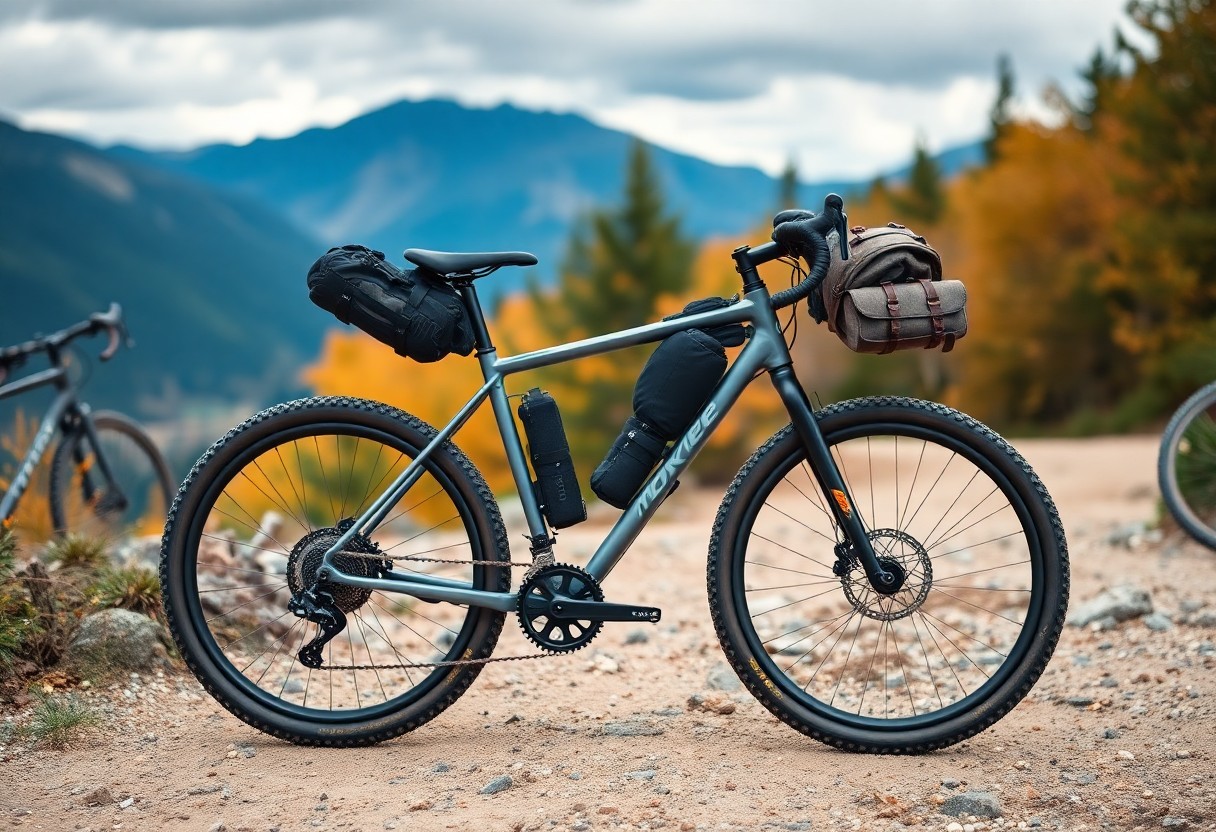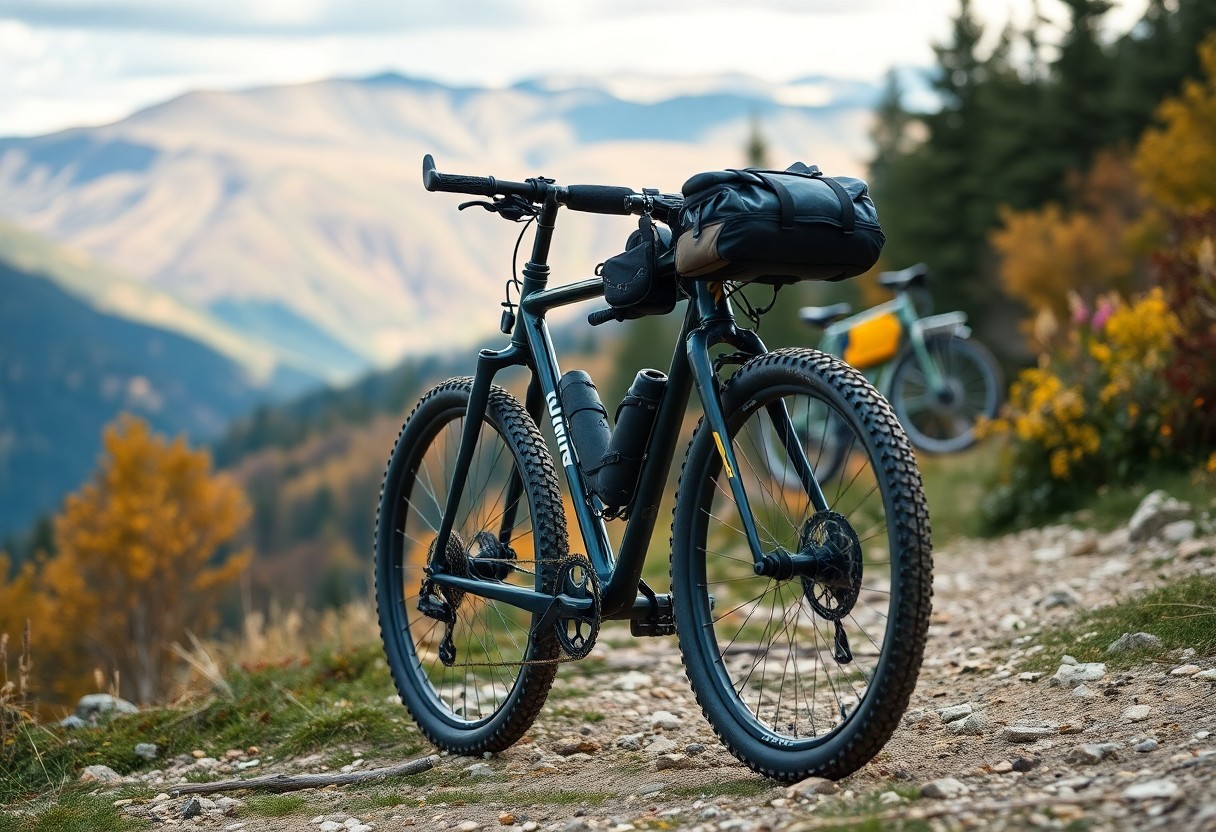With an increasing number of cyclists venturing into bikepacking, you may be wondering whether a gravel bike offers more advantages than a mountain bike (MTB) for your adventures. Both bike types have their unique benefits and potential drawbacks, making the choice pivotal for your experience. In this post, we will explore the characteristics of each bike, highlighting the terrain versatility, comfort, and load-carrying capabilities that can significantly affect your bikepacking journeys.

Gravel Bikes: The Versatile Trailblazers
With their unique blend of on-road efficiency and off-road capability, gravel bikes are rapidly becoming the go-to choice for adventurous cyclists. Their design supports a variety of terrains, allowing you to tackle everything from smooth tarmac to rugged trails. This versatility not only enhances your riding experience but also enables you to explore diverse routes, making them ideal for bikepacking escapades.
Unique Design Features of Gravel Bikes
Gravel bikes are characterised by their wider tyres, lightweight frames, and disc brakes, allowing for optimal performance across varied surfaces. They often feature a more relaxed geometry, which provides greater comfort for long-distance rides, while additional frame mounts enable you to carry all your imperative gear conveniently. This combination of features makes them adaptable and reliable companions for your bikepacking journeys.
Terrain Handling and Ride Experience
Gravel bikes excel in transitioning between different surface types, offering a smooth ride whether you’re navigating gravel paths or cruising down asphalt roads. The wider tyres provide increased traction and stability, reducing the risk of slipping on loose surfaces. You’ll find that this enhanced ride quality allows for quicker adjustments to your posture and pace, making lengthy rides less strenuous and more enjoyable.
In terms of terrain handling, gravel bikes can manoeuvre over singletrack, dirt roads, and even mild technical sections with relative ease thanks to their robust construction and responsive handling. You’ll notice how the lighter frames help maintain speed and reduce fatigue, while the increased tyre volume cushions trails and absorbs shocks effectively. This balanced agility and comfort translate into a ride that feels just right, whether you’re zipping along a flat trail or tackling a steep incline.
Mountain Bikes: The Off-Road Warriors
In off-road cycling, mountain bikes (MTBs) stand out as the undisputed champions. Built to conquer rugged terrains, these bikes boast a range of features designed for extreme versatility and durability that make them ideal for adventurous bikepacking excursions.
Robust Construction and Technical Capabilities
MTBs feature sturdy frames often constructed from materials like aluminium or carbon fibre, designed to withstand the rigours of tough trails. With advanced suspension systems, they absorb shocks from bumps and roots, ensuring a smooth ride over uneven ground. Coupled with wide tyres offering enhanced grip, these bikes provide unmatched stability during challenging rides.
Navigating Rough Terrains with Confidence
The ability to tackle rough terrains is one of the standout benefits of mountain bikes. Equipped with large, knobbly tyres, they provide exceptional traction, allowing you to grip steep climbs and navigate descents with ease. The suspension system enhances this capability by smoothing out obstacles, giving you the confidence to push your limits on off-road trails.
When confronted with rocky paths or muddy trails, the features of an MTB come into play. High ground clearance ensures you can ride over obstacles without fear of bottoming out, while the wide handlebars provide stability and control, crucial in technical sections. For cyclists seeking to explore unbeaten paths, the MTB’s ability to grip and manoeuvre through adverse conditions means you can adventure further, tackling terrains that might otherwise intimidate less robust bikes.
Bikepacking Goals: What Are You Looking For?
Your specific bikepacking goals significantly influence whether a gravel bike or MTB suits you better. If you prioritise speed and efficiency on mixed terrain, a gravel bike may be your best choice. However, for rugged trails and technical descents, the reliability of an MTB could serve you better. Consider what type of experiences you want from your bikepacking adventures, as this will shape your decision.
Trip Length and Route Diversity
The length of your trip and the variety of routes you plan to take should guide your choice. Gravel bikes excel on longer journeys with diverse surfaces, offering a comfortable ride for extended miles. In contrast, if your routes are primarily rugged and technical, an MTB ensures you have the stability and control needed for a shorter yet more challenging expedition.
Comfort vs. Performance Trade-offs
The balance between comfort and performance is a central consideration. Gravel bikes are designed for long days in the saddle, often featuring wider tyres and more relaxed geometry, which enhances comfort on mixed surfaces. Meanwhile, MTBs typically prioritise stability and control over comfort, making them ideal for aggressive riding but potentially less forgiving over long distances.
In terms of comfort versus performance, you’ll need to assess your cycling style and endurance. Gravel bikes often come with drop handlebars, providing a more aerodynamic position, ideal for lengthy rides on varied terrain. However, these bikes may not absorb shocks as effectively as MTBs, which are designed with full suspension systems to tackle rocky paths. Choosing between the two involves determining if you’ll sacrifice the plush ride comfort of an MTB for the speed and efficiency of a gravel bike or vice versa. Analyse your riding preferences and comfort needs against performance requirements to arrive at a decision that suits your adventurous spirit.
Real-Life Experiences: Insights from Bikepackers
Real-life experiences of bikepackers provide valuable insights into the practical implications of choosing between a gravel bike and a mountain bike (MTB) for your adventures. Many enthusiasts actively share their preferences, highlighting the importance of comfort, efficiency, and performance over varied terrain. By examining their adventures, you can glean knowledge from their journeys, ensuring that your bikepacking trips align with your goals and riding style.
Testimonials and Preferences
Many bikepackers favour gravel bikes for their speed and long-distance comfort, particularly on mixed terrain. One rider, after completing a 400 km tour, noted how the lighter frame and road-optimised gearing significantly enhanced their experience compared to previous trips on an MTB. Conversely, some riders swear by mountain bikes for their stability and robustness when navigating rough trails punctuated by rocky sections and steep ascents, illustrating that personal preference plays a key role.
Case Studies of Multi-Day Adventures
Several case studies reveal distinct experiences that bikepackers face while using either bike type over multi-day adventures. Statistical data highlights how the choice between a gravel bike or MTB impacts performance, pace, and enjoyment across different terrains.
- Adventure 1: 5-day tour across varied terrain (gravel and singletrack) on a gravel bike: Average speed of 20 km/h, total distance of 600 km, minimal mechanical issues.
- Adventure 2: 3-day MTB escapade through mountainous regions: Average speed of 15 km/h, total distance of 250 km, experienced multiple flat tyres due to rugged terrain.
- Adventure 3: 7-day road and gravel mix on a hybrid: Average speed of 18 km/h, total distance of 750 km, comfortable performance with fewer exhaustion-related setbacks.
- Adventure 4: 2-day singletrack challenge on an MTB: Average speed of 14 km/h, total distance of 150 km, showcased the bike’s superior handling in technical sections.
These case studies illustrate not only the versatility of gravel bikes in covering diverse terrain but also highlight the robust performance of mountain bikes on extreme routes. By consulting data and experiences from fellow bikepackers, you can make a more informed choice aligned with your individual riding ambitions and the routes you wish to tackle.
Cost, Maintenance, and Gear Compatibility
Evaluating the cost and upkeep of gravel bikes versus mountain bikes reveals significant differences. Generally, gravel bikes come at a lower price point, offering excellent value for money, especially if you opt for entry to mid-range models. Maintenance tends to be simpler as they feature fewer complex components, making DIY repairs more accessible. In contrast, MTBs often require specialised parts and care due to their advanced suspension systems and heavy-duty features, which can lead to increased long-term costs. Additionally, gear compatibility can be a factor, as gravel bikes often accommodate a broader range of accessories and spares that can be sourced economically.
Investment Considerations for Each Bike Type
Your investment in either a gravel bike or an MTB hinges on your riding style and intended use. Gravel bikes typically require a lower initial investment, while high-end MTBs can be considerably more expensive due to their advanced technology and materials. Over time, factor in repairs and replacement parts—MTBs often demand more frequent servicing, thus inflating overall costs.
Supporting Accessories for Bikepacking
To maximise your bikepacking experience, specific accessories greatly enhance functionality and comfort. Essential items include quality racks, panniers, and frame bags which can effectively distribute your load while maintaining balance and stability on either bike. A reliable GPS or navigation system is a must, particularly for off-the-beaten-path adventures. Moreover, water storage solutions, whether on handlebars or within bags, ensure hydration during your rides, vital for prolonged outings.
Consider also investing in handlebar bags for easy access to vitals like snacks and tools, while a bike repair kit can prove invaluable during unforeseen circumstances. Moreover, the choice of a lightweight tent or ultralight sleeping gear can significantly impact your bike’s performance and comfort on overnight trips. The right accessories not only enhance your bikepacking setup but ensure smoother journeys, allowing you to focus on enjoying the ride rather than worrying about your gear.
Conclusion
Following this analysis, you should consider that a gravel bike may suit your bikepacking needs better than a mountain bike, particularly if you’re seeking versatility on varied terrain and improved efficiency on long rides. With a lightweight frame and wider tyres, a gravel bike enhances comfort and speed on both paved and unpaved paths. However, if your adventures lead you to more rugged trails, a mountain bike’s robust design and enhanced suspension could be advantageous. Ultimately, your choice should align with the terrain and style of bikepacking you prefer.
